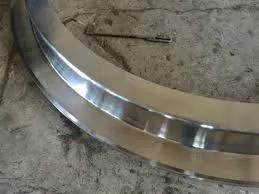- Afrikaans
- Albanian
- Amharic
- Arabic
- Armenian
- Azerbaijani
- Basque
- Belarusian
- Bengali
- Bosnian
- Bulgarian
- Catalan
- Cebuano
- China
- China (Taiwan)
- Corsican
- Croatian
- Czech
- Danish
- Dutch
- English
- Esperanto
- Estonian
- Finnish
- French
- Frisian
- Galician
- Georgian
- German
- Greek
- Gujarati
- Haitian Creole
- hausa
- hawaiian
- Hebrew
- Hindi
- Miao
- Hungarian
- Icelandic
- igbo
- Indonesian
- irish
- Italian
- Japanese
- Javanese
- Kannada
- kazakh
- Khmer
- Rwandese
- Korean
- Kurdish
- Kyrgyz
- Lao
- Latin
- Latvian
- Lithuanian
- Luxembourgish
- Macedonian
- Malgashi
- Malay
- Malayalam
- Maltese
- Maori
- Marathi
- Mongolian
- Myanmar
- Nepali
- Norwegian
- Norwegian
- Occitan
- Pashto
- Persian
- Polish
- Portuguese
- Punjabi
- Romanian
- Russian
- Samoan
- Scottish Gaelic
- Serbian
- Sesotho
- Shona
- Sindhi
- Sinhala
- Slovak
- Slovenian
- Somali
- Spanish
- Sundanese
- Swahili
- Swedish
- Tagalog
- Tajik
- Tamil
- Tatar
- Telugu
- Thai
- Turkish
- Turkmen
- Ukrainian
- Urdu
- Uighur
- Uzbek
- Vietnamese
- Welsh
- Bantu
- Yiddish
- Yoruba
- Zulu
Oct . 11, 2024 17:35 Back to list
Innovative Design of Tube-in-Tube Heat Exchangers for Enhanced Thermal Performance
Tube-in-Tube Heat Exchangers An Overview
Heat exchangers play a critical role in a multitude of industrial processes, enabling the efficient transfer of heat between two or more fluids. Among the various configurations available, tube-in-tube heat exchangers have gained popularity due to their flexibility, reliability, and efficiency. This article explores the design, operation, advantages, and applications of tube-in-tube heat exchangers.
Design and Operation
The tube-in-tube heat exchanger consists of two concentric tubes an inner tube and an outer tube. The hot fluid flows through the inner tube while the cold fluid circulates in the annular space between the inner and outer tubes. This arrangement allows for effective heat transfer between the fluids, with the hot fluid transferring heat to the cold fluid as they flow in opposite directions—a process known as counterflow heat exchange.
The design of tube-in-tube exchangers can be modified to accommodate various flow arrangements. In addition to counterflow, parallel flow and crossflow configurations can also be employed, depending on the specific requirements of the application. Manufacturers often customize the length, diameter, and materials of the tubes to optimize heat transfer performance based on the properties of the fluids being used.
Advantages
One of the primary advantages of tube-in-tube heat exchangers is their high heat transfer efficiency. The two-tube construction maximizes surface area for heat exchange while minimizing thermal resistance. The compact design of the heat exchanger allows it to fit into applications with limited space, making it particularly beneficial for industries such as chemical processing, oil and gas, and power generation.
Another significant advantage is the enhanced flexibility offered by tube-in-tube designs. They can handle a wide variety of fluid types, including corrosive and viscous fluids. Furthermore, the design allows for easy cleaning and maintenance. The inner tube can be removed for inspection or cleaning without dismantling the entire system, which is crucial in processes where fouling may be a concern.
tube in tube exchangers

The thermal performance of tube-in-tube exchangers can be further improved by utilizing various enhancements such as finned tubes or turbulators. These enhancements disrupt the flow and create turbulence, thereby increasing the heat transfer coefficient and improving overall efficiency.
Applications
Tube-in-tube heat exchangers are utilized across a diverse range of industries and applications. In the petrochemical and oil refining industries, they are commonly employed for cooling and heating crude oil and its derivatives. The efficiency and reliability of these heat exchangers contribute to the optimization of energy consumption in these critical sectors.
In the food processing industry, tube-in-tube heat exchangers are extensively used for pasteurization and sterilization processes. Their ability to handle varying flow rates and fluid characteristics makes them ideal for food applications where maintaining hygiene and quality is paramount.
Moreover, they find applications in HVAC systems for heating and cooling purposes, as well as in thermal energy storage systems that require efficient heat transfer capabilities. In the pharmaceutical industry, the reliability and efficiency of tube-in-tube heat exchangers make them suitable for processes requiring stringent temperature control.
Conclusion
In summary, tube-in-tube heat exchangers are crucial components in many industrial applications. Their design offers a combination of efficiency, flexibility, and reliability that meets the diverse needs of various industries. As technology advances and industries continue to seek energy-efficient solutions, the importance of heat exchangers—especially tube-in-tube designs—is likely to grow even further. Companies looking to improve their thermal management systems should consider the benefits offered by this versatile type of heat exchanger, as it holds significant promise for enhancing operational efficiency and reducing energy costs.
-
Premium Cast Iron Water Main Pipe: Durable, Corrosion-Resistant
NewsAug.03,2025
-
Durable Cast Iron Water Mains | AI-Optimized Systems
NewsAug.02,2025
-
High-Efficiency Propane Boiler for Baseboard Heat | Save Energy
NewsAug.01,2025
-
Premium Source Suppliers for Various Gray Iron Castings
NewsJul.31,2025
-
Durable Cast Iron Water Main Pipes | Long-Lasting
NewsJul.31,2025
-
High-Quality Cast Iron Water Main Pipe for Durable Infrastructure
NewsJul.30,2025


